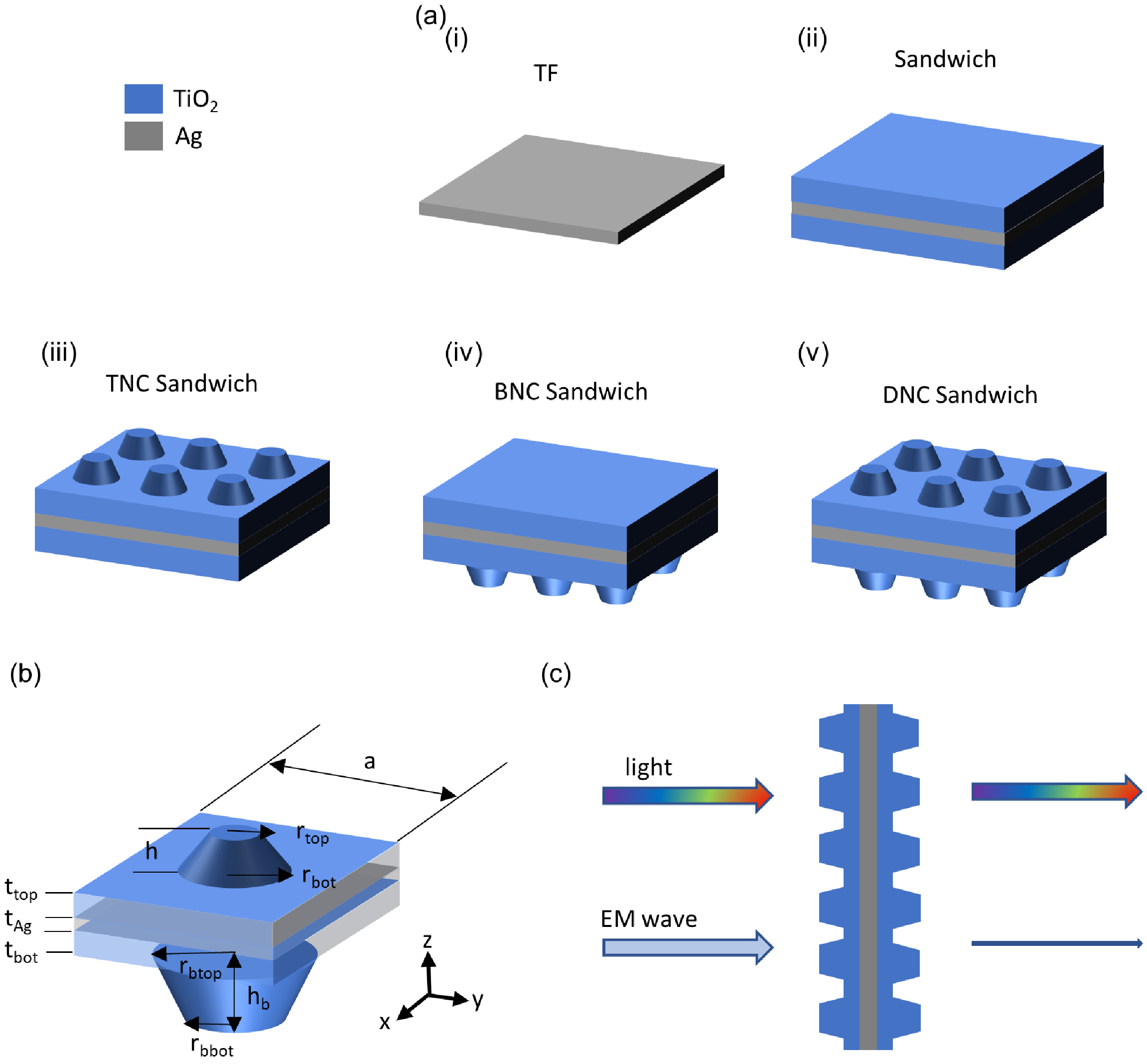Bayesian optimization of nanophotonic electromagnetic shielding with very high visible transparency
Published in Optics Express, 2022
Abstract
Transparent electromagnetic interference (EMI) shielding is needed in many optoelectronic applications to protect electronic devices from surrounding radiation while allowing for high visible light transmission. However, structures that achieve very high transmission (over 92.5%) alongside high EMI shielding efficiency (over 30 dB) have yet to be demonstrated in the literature. Bayesian optimization is utilized to optimize different nanophotonic structures aiming for high EMI shielding efficiency and high visible light transmission. For average visible light transmission below 90%, sandwich structures composed of high index dielectric/silver/high index dielectric films are found to be optimal. These structures are capable of achieving 43.1 dB shielding efficiency and 90.0% average visible light transmission. The high index of refraction dielectric layers help reduce absorption losses in the silver and can be engineered to provide antireflection through destructive interference However, to achieve optimal EMI shielding with average visible light transmission above 90%, the reflection losses at the air/dielectric interfaces need to be further minimized. Optimized double-sided nanocone sandwich structures are identified as the best solution, achieving 41.2 dB shielding efficiency with 90.8% visible light transmission and 35.6 dB shielding efficiency with 95.1% visible light transmission. K-means clustering is used to illustrate the performance of characteristic near-Pareto optimal structures. Double-sided nanocone structures are shown to exhibit omnidirectional visible transmission, maintaining a shielding efficiency of 35.6 dB and over 85% visible light transmission at incidence angles up to 70 degrees.

Recommended citation: Li, Mingxuan; McCourt, Michael J; Galante, Anthony J; Leu, Paul W. (2022). "Bayesian optimization of nanophotonic electromagnetic shielding with very high visible transparency." Optics Express. 30(18): 33182-33194. https://www.lamp.pitt.edu/Publications/056.pdf
